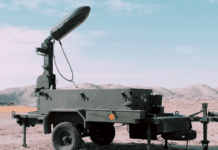This post is also available in:
 עברית (Hebrew)
עברית (Hebrew)
A new prototype developed by researchers at the University of Washington could reshape how people navigate multilingual environments. The system, dubbed Spatial Speech Translation, enables real-time translation of multiple speakers simultaneously—while preserving the unique voice characteristics and spatial positioning of each individual.
Unlike existing translation tools that assume one speaker at a time or rely on robotic, generic voice outputs, this solution allows users to experience translated conversations in a way that feels more natural. Built using commercially available noise-canceling headphones fitted with external microphones, the system isolates speakers’ voices, determines their direction in space, translates the speech, and plays it back to the user with a short delay, according to TechXplore.
The core innovation lies in the algorithm’s ability to continuously scan 360 degrees around the listener, identifying how many speakers are present and tracking them as they move. This allows the system to update in real time, even as participants shift positions or turn their heads. Crucially, each translated voice maintains the original speaker’s vocal timbre and directional location, offering a highly immersive listening experience.
The translation process occurs entirely on-device, without using cloud-based services, in order to avoid privacy risks associated with transmitting audio to external servers, such as voice cloning.
Initial tests in a variety of indoor and outdoor environments helped the researchers to refine the system’s settings based on the users’ feedback. While the current system supports everyday speech in languages like Spanish, French, and German, researchers expect future versions to expand to dozens more languages and improve speed. Although it doesn’t yet handle specialized terminology, the potential applications span tourism, international collaboration, and public services.
With multilingual interaction becoming more frequent in today’s globalized world, this wearable innovation brings real-time, spatially-aware translation one step closer to everyday reality.

























